If you’re reading this article, you probably fall into one of the three buckets below:
Luckily, this article is geared toward solving the issues and pain points of all three of those buckets by walking you through our SaaS Growth Framework.
I’ve personally worked one-on-one with over 50+ SaaS companies over the past 24 months, and this exact content framework has been one of the main drivers of MRR growth for those clients.
My objective with this article is to allow you to develop a framework internally for creating a SaaS content strategy that will allow you to re-focus your efforts first on the high-impact items, and work your way down the list accordingly.
Let’s dive in. 👇
How you map out the content strategy for your SaaS and exactly with which content types you prioritize is going to be dependent on the stage of the game you’re currently at.
Here’s a visual breakdown of the SaaS marketing funnel from a content perspective:
Here’s how we approach SaaS content strategy for our SaaS SEO clients.
For established SaaS organizations that have not previously dipped their toes in SEO, and have:
It makes sense to start at the bottom of the funnel and work your way up:
Creating and optimizing bottom-funnel content first is where you’ll capture the easy wins, and see quick wins from micro conversions.
The bottom of the funnel is where prospects are searching for your business or a solution to a problem that your SaaS solves.
If you’re a recently launched SaaS, have no or minimal brand awareness, and have a not-so-great link profile, it makes sense to start at the top of the funnel and mix in elements from the mid and bottom funnels.
Why?
You first need to focus on building your link profile, which will allow you to later capture bottom-funnel demand and rank in Google and other search engines.
Backlinks are one of the most important ranking factors to search engines like Google and without a quality-link profile, you won’t be able to instantly rank for bottom-funnel terms like “customer onboarding software” whereas you will be able to map out and rank for top-funnel long-tail keywords gradually over time.
Your number one priority should be creating linkable assets, and distributing those assets with a sound link-building strategy in place to then allow your bottom-funnel content to rank (more competitive in nature, as that’s where the conversions occur.)
Related Content: Link Building for SaaS
Regardless of where you’re starting, it’s important to have your keyword strategy also dialed in as you work your way mapping content topics and keywords against each content type in the funnel.
Top of the funnel content (TOFU) is geared around creating value and educating your cold audience about the problems you solve, and building brand awareness.
TOFU content also can be utilized to help your audience become problem-aware.
Generally, TOFU content has low conversion intent, with high search volume – the opposite of bottom-funnel content – but it plays a very important role in your overall content strategy.
Our goal is to move users down the funnel, from top to mid to bottom over time.
When you’re building out guides, you should be mapping them back to the core use cases of your product.
Take for example Totango, a SaaS product in the customer onboarding space one of its main use cases is to help reduce churn and conquer churn management.
They have an extensive set of guides on the topics of churn, starting high-level with “What is Churn Management?” down to more granular topics such as “Churn Management Strategies”.
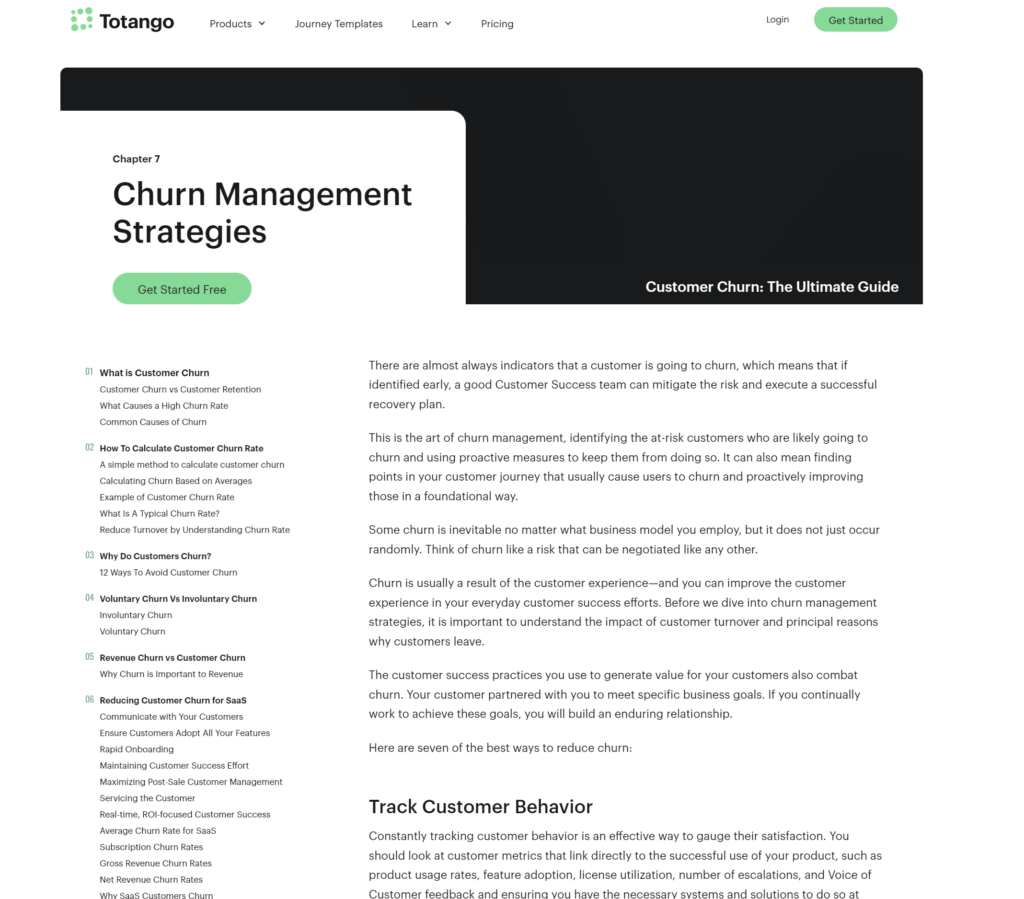
Totango creates these guides to educate, and help their audience also become problem-aware in many cases.
They link directly to a CTA related to reducing churn at the bottom (and in-line in some content pieces) on the page:
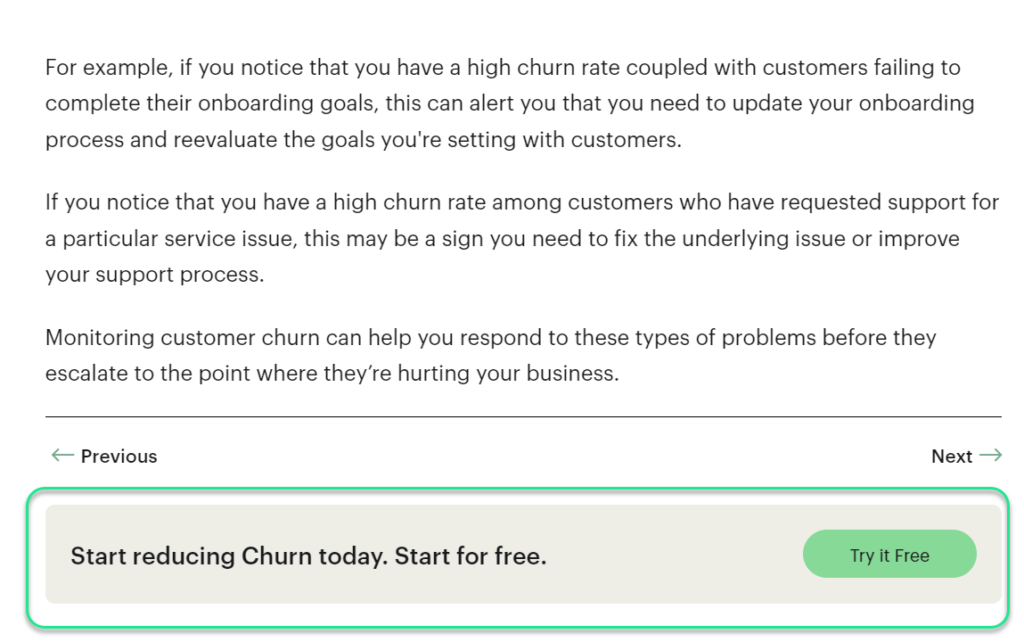
And they also help to take the user on a journey down the funnel, adding contextual links to some of their mid-funnel resources, including these relevant case studies on exactly how they helped clients resolve these problems with their product:
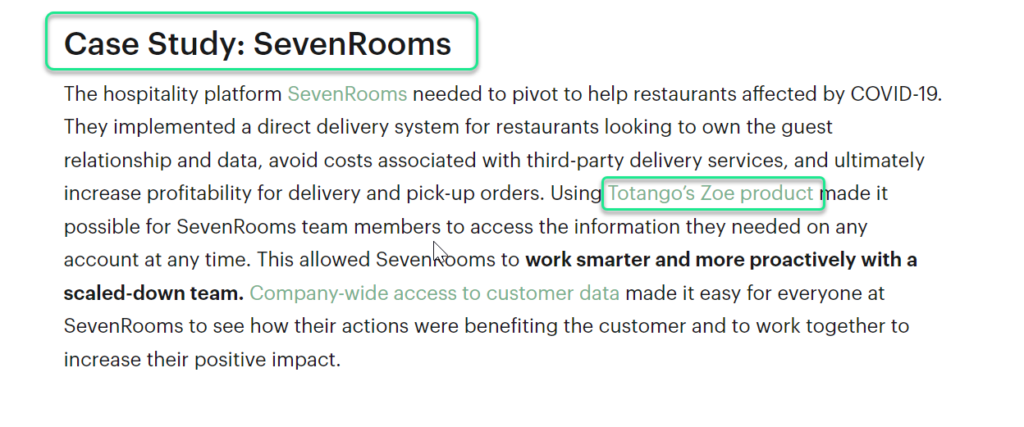
Totango is an excellent example of how we can best leverage guides to guide the user through the funnel.
The idea behind creating how-to pieces of content is to take up real estate in the search results when a user is searching for a way to accomplish a task that your product helps them to achieve.
How-to guides are a very powerful way to address problems your users are looking to solve while showcasing your expertise in solving that problem, as well as how your product can make their lives even easier.
Related Content: Keyword Research for SaaS
Leapwork, a product that helps with SalesForce automation, has a great example of how they rank for “how to automate Salesforce tasks”
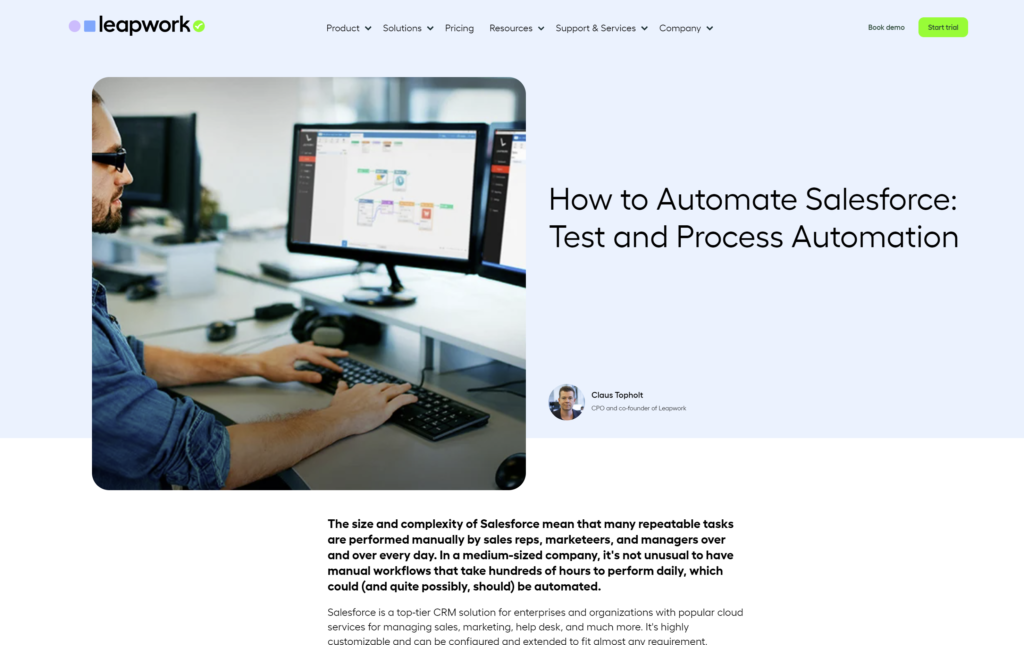
They focus on common pain points in the introduction and educate the user on how to solve those problems.
They have an in-content guide on Salesforce automation as well:
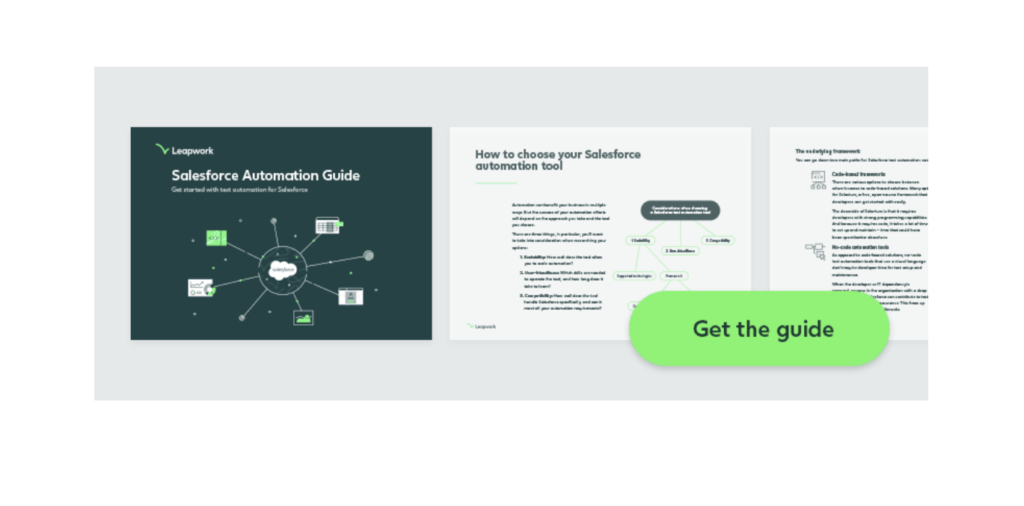
An excellent way to grab the email of interested users, and to nurture them over time with value and through education.
If you’re working with existing rankings and traffic, leveraging Google Search Console can be a goldmine for finding and building out helpful content around “how to” and other similar queries.
By using the regex functionality within GSC, you can search and filter for queries that are based on questions, especially queries focused on how to do X.
^(how|why|can|what|where|when|who|which|whose|whom|does|do|is|are|was|were|could|should|would|will|did|may|might|shall|must)\b
To set this up:
1) Open your Google Search Console
2) Go to “Search results”
3) On the filters at the top click on “+ New”
4) Select “Query”
5) Change the drop-down to “Custom (regex)”
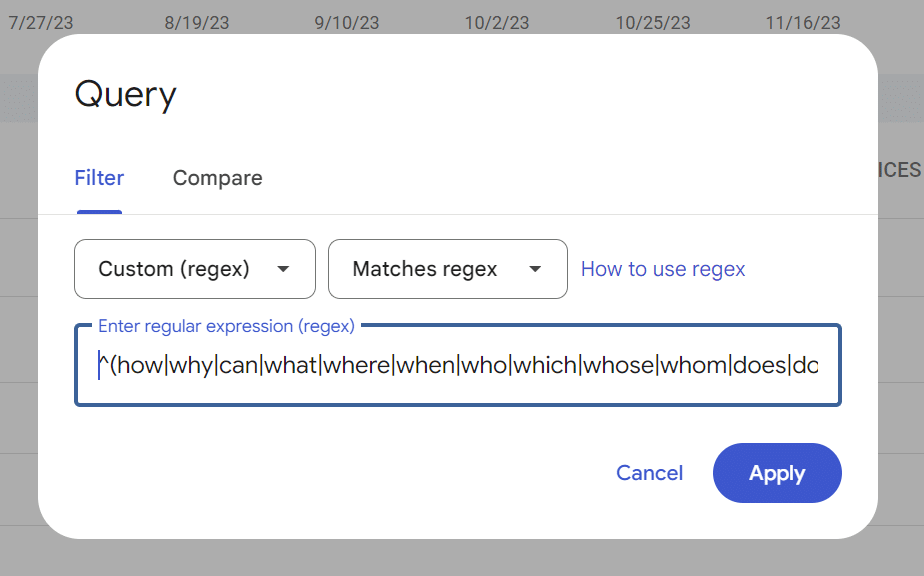
Thought leadership style content and opinion-based articles are great content assets to leverage for building brand awareness during the discovery phase.
Groove is a great example of creating thought-leadership-style content:
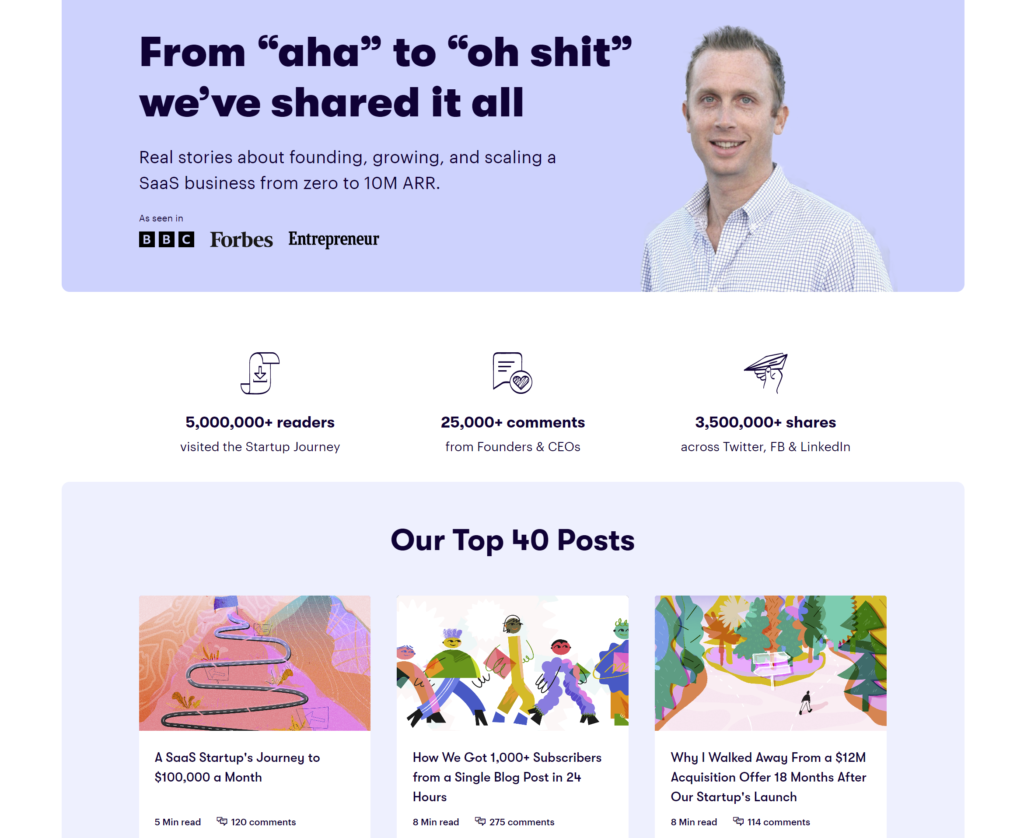
They showcase as they put it “real stories about the founding, growing and scaling a SaaS business from zero to 10M ARR” while building detailed topics around different relevant stories and giving back value:
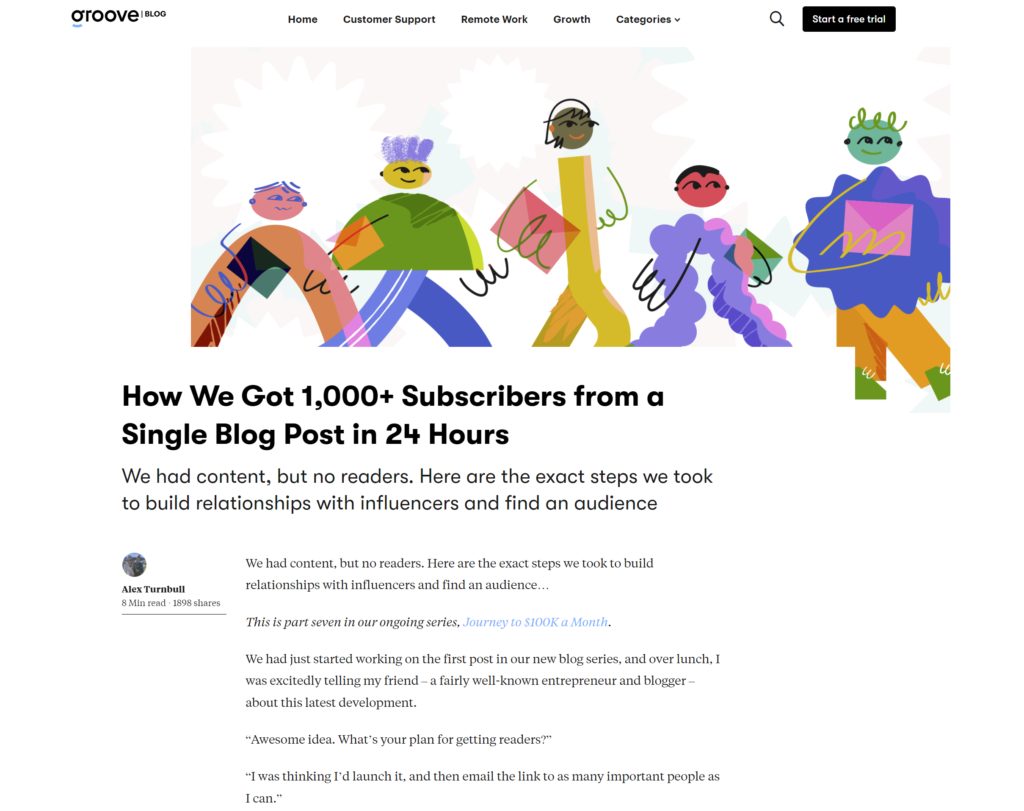
Of course, they attribute a lot of this success back to increasing customer happiness at scale – exactly what their product solves for.
👉 Just getting started building out a content strategy and stuck on where to start? Or have you been creating content for more than 2 quarters and still haven’t seen a meaningful increase in organic traffic or MQLs? We can help you to overcome those roadblocks, and start growing faster. Schedule a Free Grow Faster Session with our veteran SaaS marketing team.
Expert roundups are a great way to leverage industry relationships and compile a detailed post on a subject while at the same time, building brand awareness and working users down the funnel.
Parlor, for example, a SaaS product focused on user relationship management has compiled an expert round-up focused on asking experts in the space how to best reduce customer churn:
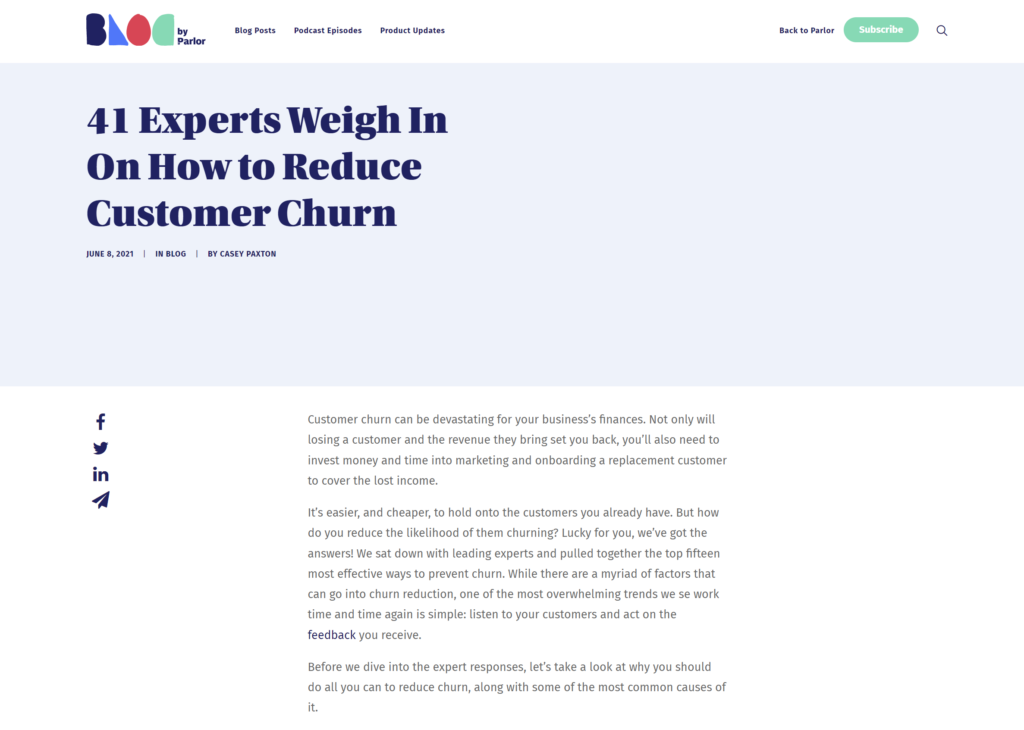
This content piece provides practical ways to reduce customer churn and gets into the expert’s opinions on best practices and how to solve this issue.
They also link out (free backlink alert) to their expert’s businesses:
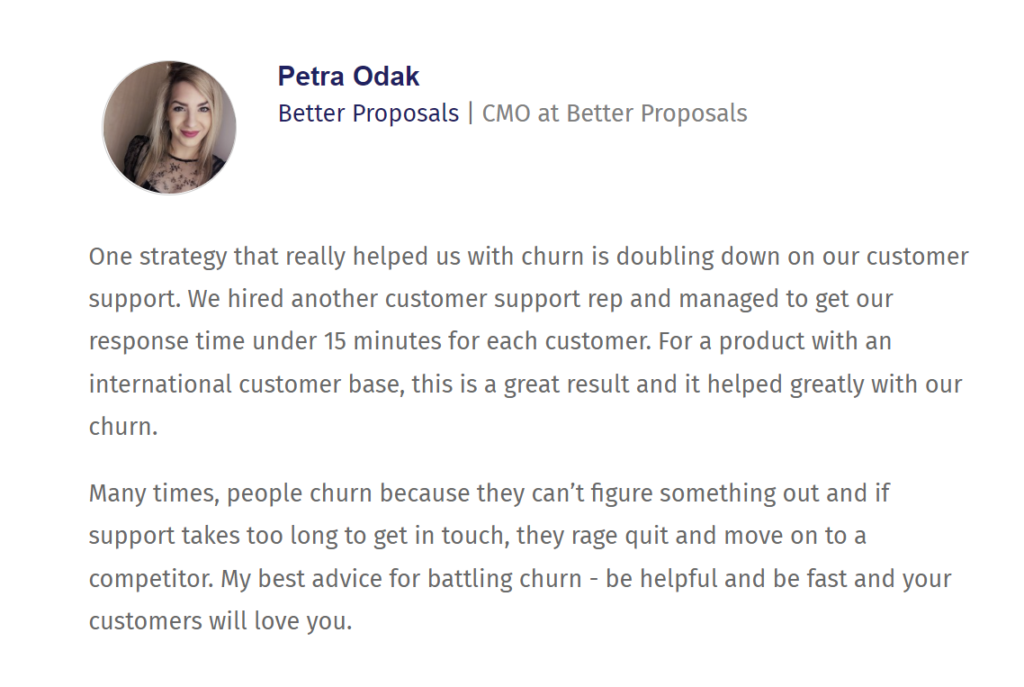
And include in-content CTAs to push users down the funnel:
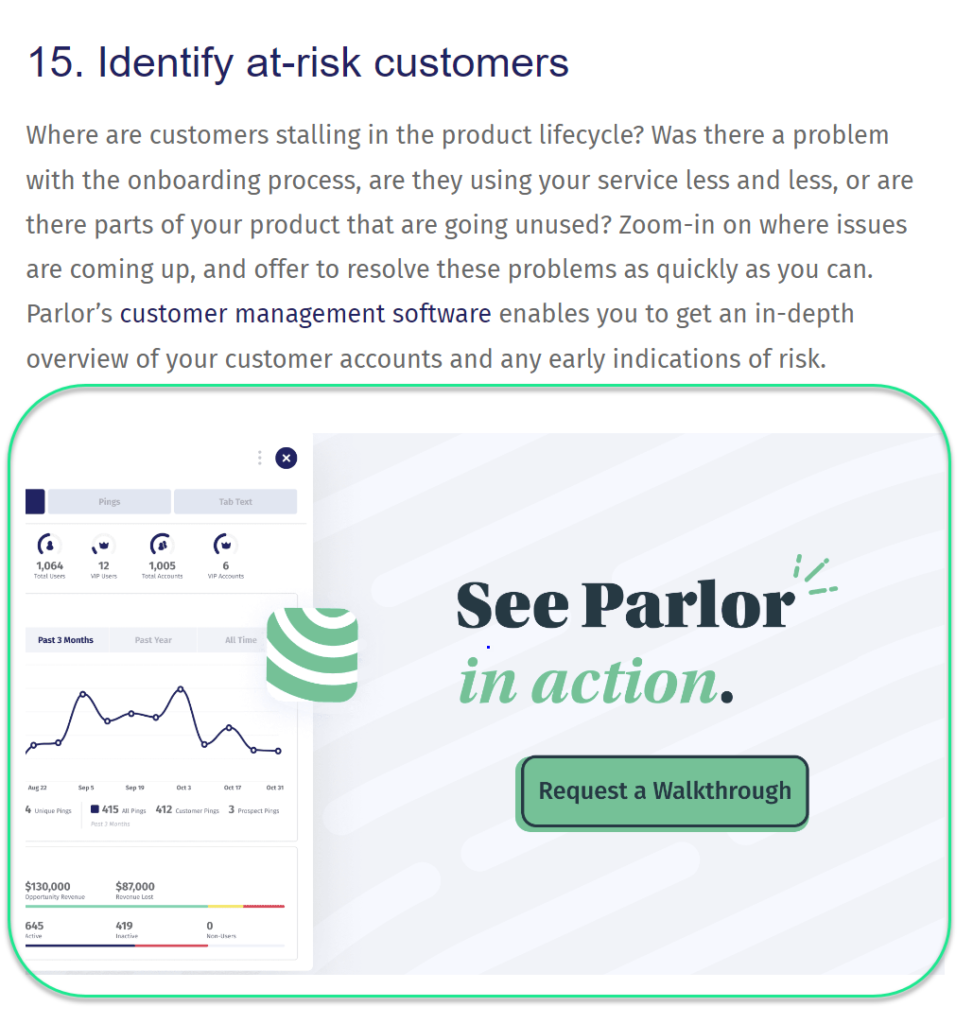
Overall, a great roundup even though there are some improvements that could be used to squeeze more value out of this page, such as including contextual links to pass link value to other pages and push users first to the mid-funnel.
At the middle of the funnel (MOFU), we typically see (drumroll..) middle conversion and buying intent, as well as middle-level search volumes.
At MOFU, we want to clearly showcase the value that our product offers.
Creating tools built around your product is an excellent way to quickly bolster your link profile, by creating an awesome linkable asset, all while showcasing the benefits that come with your product.
If you take a look at some of the top SaaS products across industries that dominate search, they’ve leveraged product-based tools to quickly scale out their content efforts by driving external links to the tool and pushing that value by strategically linking to other pages on their website.
Product tools can include a wide variety of types, such as:
Once SaaS that has built a monster presence off the back of product-style tools is Clockify.
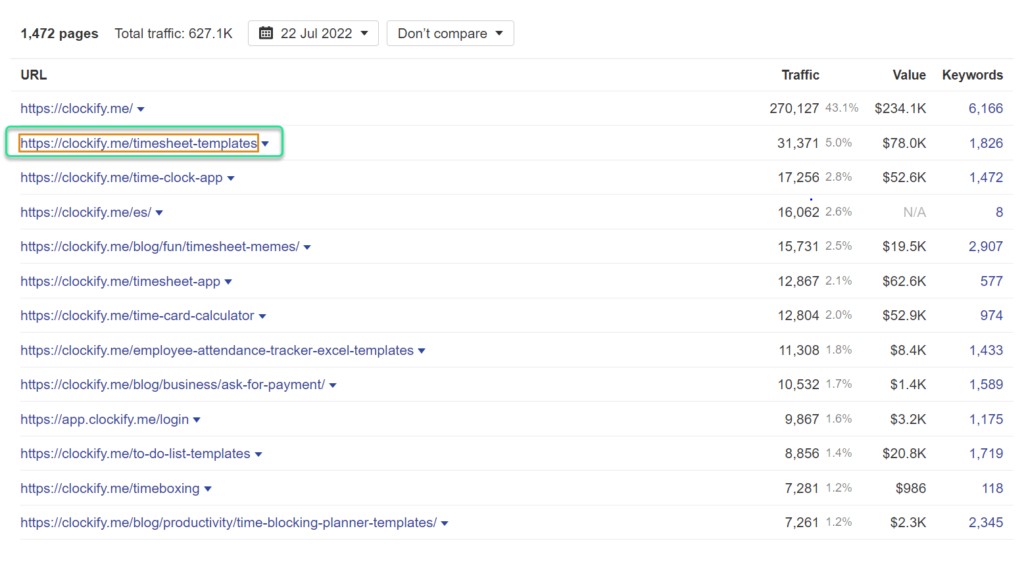
Their second most trafficked page (and one of their top pages by backlinks) is a page dedicated to providing printable timesheets which can be downloaded, customized, and used for a bunch of different use cases:
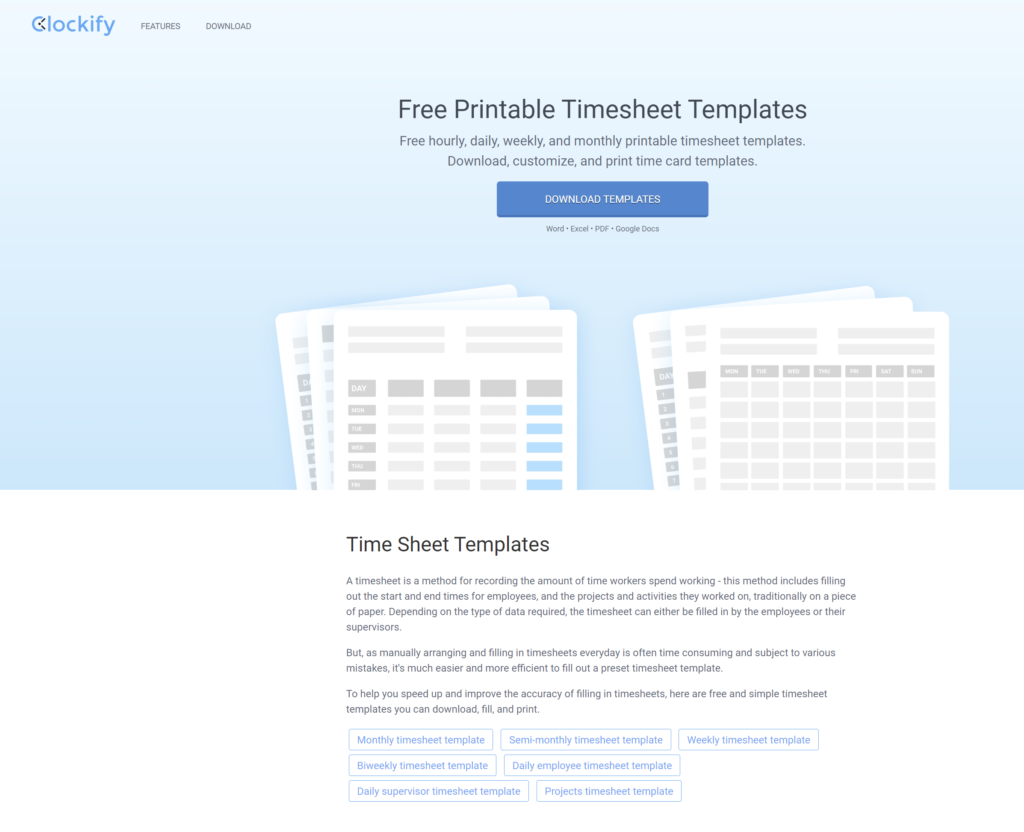
The purpose of Clockify is to eliminate the need for paper timesheets, making everything streamlined and digital.
This is an easy win for them to be in front of their target audience, and to propel their other bottom, mid and top-funnel pages to rank in search due to the sheer amount of links this content has picked up.

Even other SaaS products, for example, BambooHR in the HRIM space links out to them as a resource.
Struggling to grow organic demos signups? Rock The Rankings is a top-ranked SaaS SEO Agency that helps SaaS businesses make organic their customer acquisition engine. We’ll create a free marketing plan for your business, and walk you through step-by-step exactly what needs to be done to grow faster.
Market and industry-specific research content are a great way to start building out the business case for using your product.
This content type is different from case studies, where you’re focused on specific results your product has achieved for clients – rather, this is more general content on the use case of similar SaaS products within your industry.
Market and industry research content typically is focused on specific industry trends, and providing the up-front research to your target marketing roles such as marketing managers to help give them the business case and firepower for internal approval of using your product.
Market and industry research is also great content to distribute on social, as well as it acts as a passive and natural link generator in nature by being simply a great resource.
Veeam, a B2B SaaS product in the enterprise data backup and protection space has an excellent set of market and industry-specific research pieces, including “The 2022 Data Protection Trends Report”
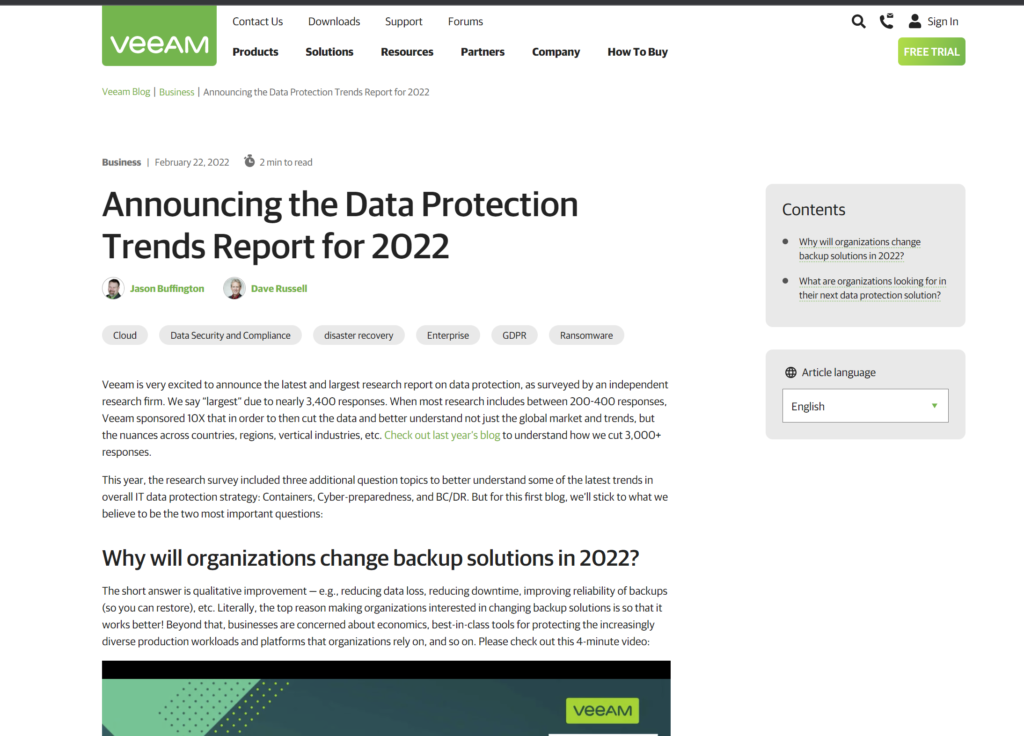
They leverage this content piece by walking through the data across the industry in a series of mini-videos and downloadable reports specifically to be used as both thought leadership, as well as to help internal marketing teams build business cases for executive approval.
Building case studies around keyword search intent is an excellent way to show how you’ve solved a problem for your clients and to allow your case studies to actually be found in Google and other search engines.
An example of this would be a SaaS product that provides video marketing through customer video testimonials and crafting social proof through video.
The search term “video marketing strategy” would be an excellent opportunity to showcase how you’d approach video marketing for clients, as well as how you’ve driven results for a specific client using that exact strategy.
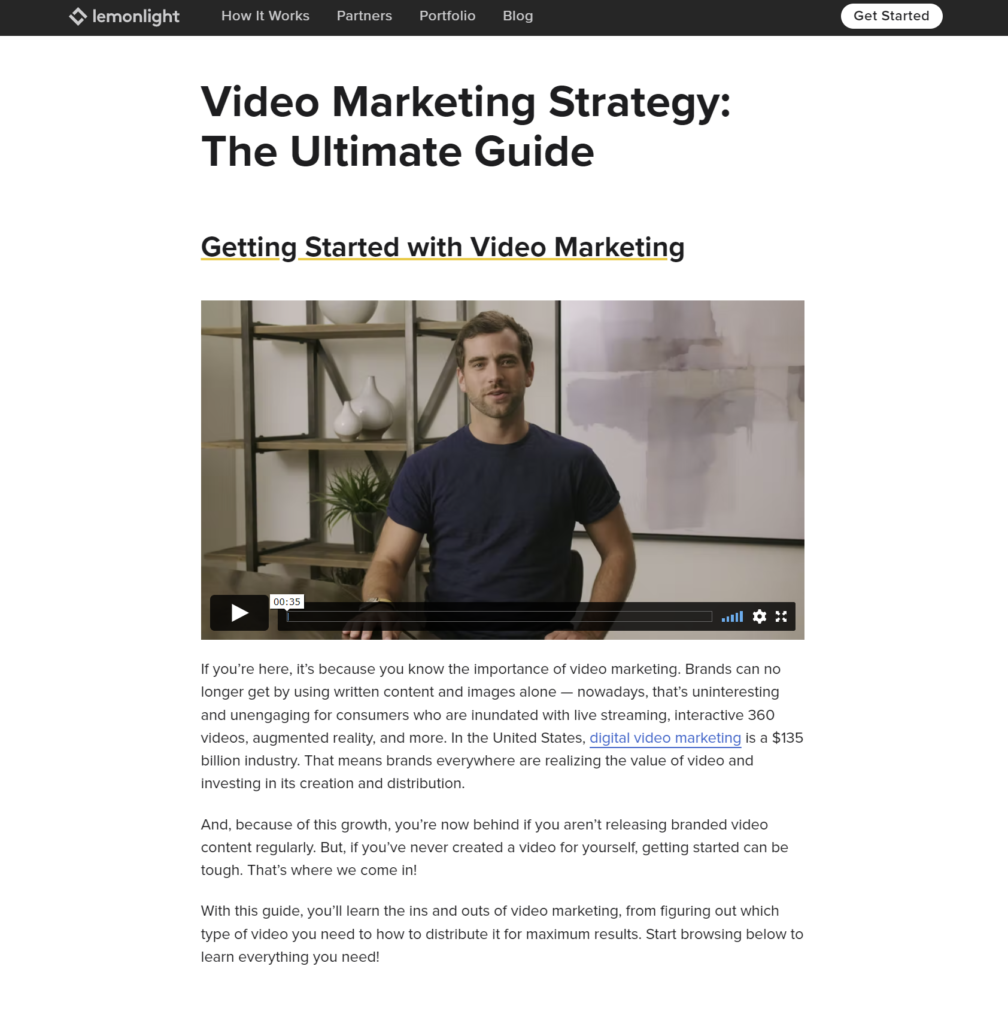
Lemonlight, an organization focused on video marketing services, does exactly that by breaking down the use cases of video marketing, and showcasing one of their clients in each section:
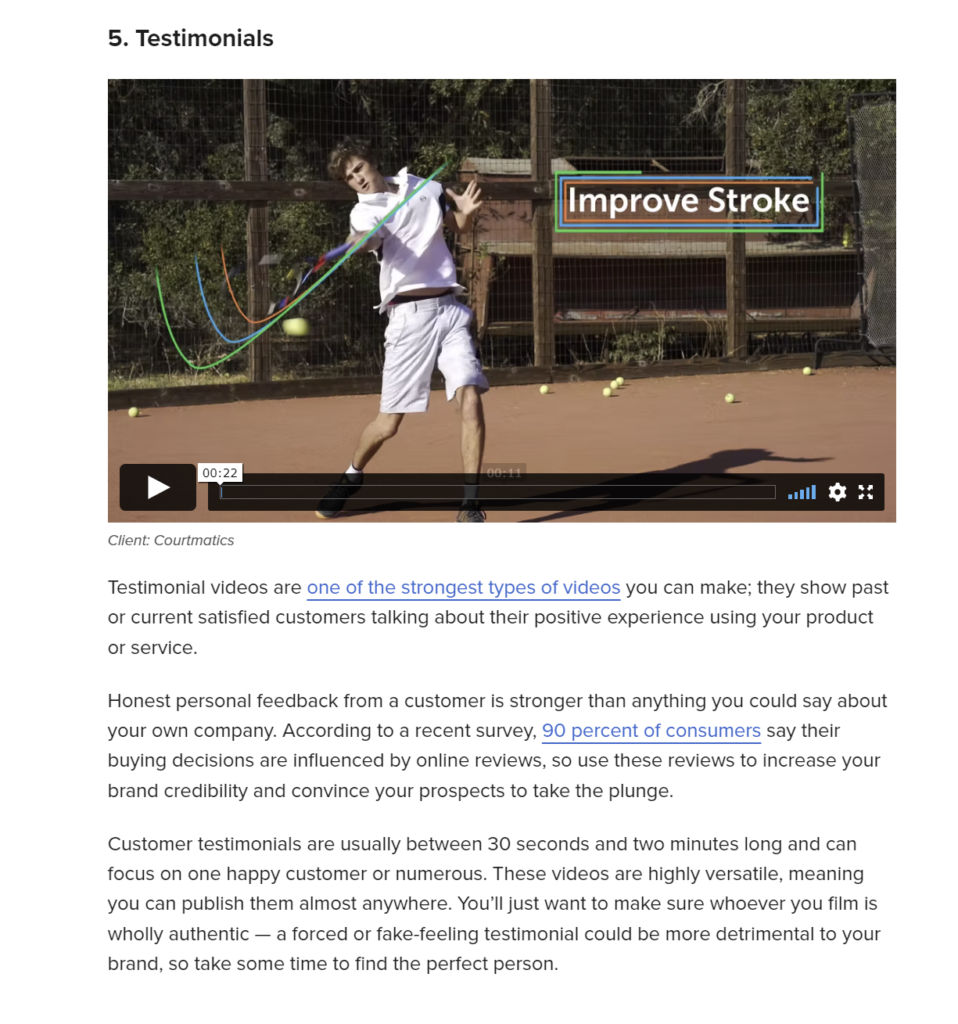
Nothing can speak louder than the words of your clients, all while mapping that back against search queries and adding value and educating through your work.
Once we’ve hit the bottom of the funnel (BOFU), we’re now specifically addressing potential prospects that have a specific problem and need, and are looking for a way to solve it.
Our goal with these content types is to drive prospects to book a demo or sign up for a trial.
We should have our copy fully dialed in on these pages, and use compelling CTAs on our content pages.
Features and benefits pages oftentimes are some of the most valued pages on your website, because when you map them properly back against existing search volume, you’ll be found exactly when prospects are searching for what your product offers.
These pages will usually target queries that describe the product you offer, as well as the solution that users are looking for.
Brightlocal, a product that predominately helps businesses manage their online reputation, has specifically built its product and features pages mapped back against bottom-funnel keywords, such as “reputation management software”:
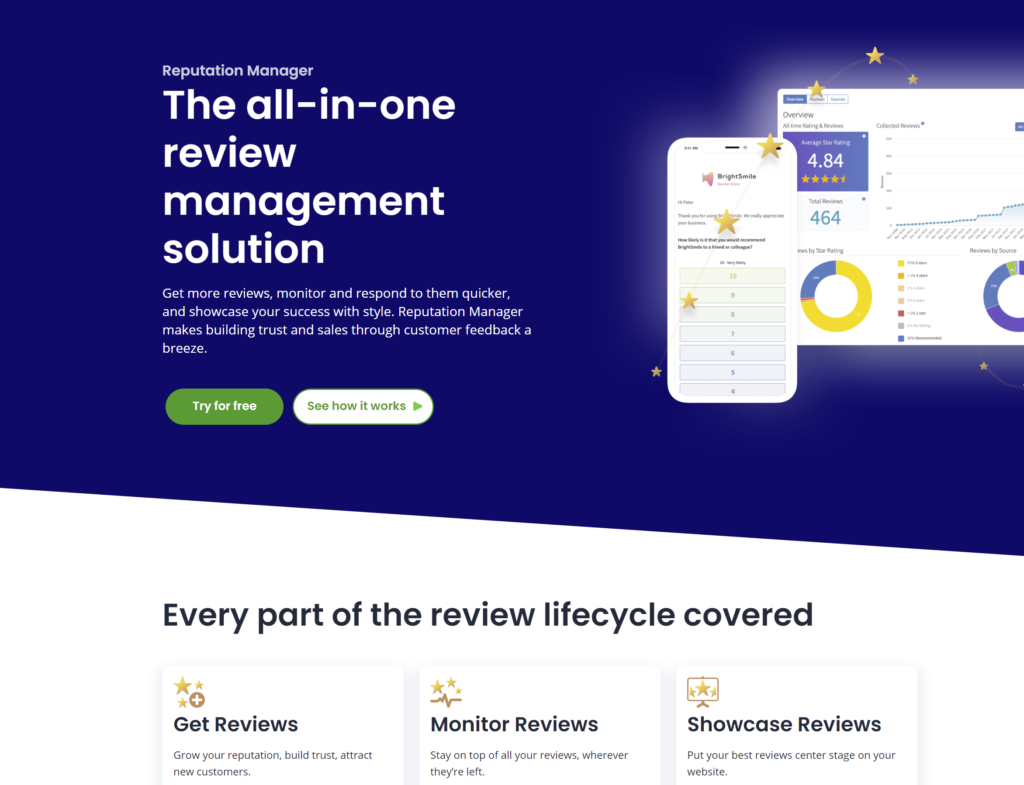
Features and benefits pages are extremely valuable pages as they allow you to get in front of searchers who are actively looking for exactly what your product does.
👉 Just getting started building out a content strategy and stuck on where to start? Or have you been creating content for more than 2 quarters and still haven’t seen a meaningful increase in organic traffic or MQLs? We can help you to overcome those roadblocks and start growing faster. Schedule a Free Grow Faster Session with our veteran SaaS marketing team.
Competitor comparison pages are when someone is searching for your brand vs. a competitor’s brand (Monday vs. Asana) whereas alternative pages are when an existing user is looking to most likely switch from their current product to another (“Monday alternatives”).
Creating competitor comparison landing pages is an important tactic in the SaaS world with bottom-funnel intent.
Related Content: Competitor & Alternative Pages for SaaS
Both competitor and alternative pages are bottom-funnel, and we want to capture this search volume and not allow either our competitors or aggregators like G2 or Capterra to control the narrative of our product.
ClickUp, a competitor to Monday has done an awesome job creating a singular hub for capturing all relevant competitor and alternative terms:
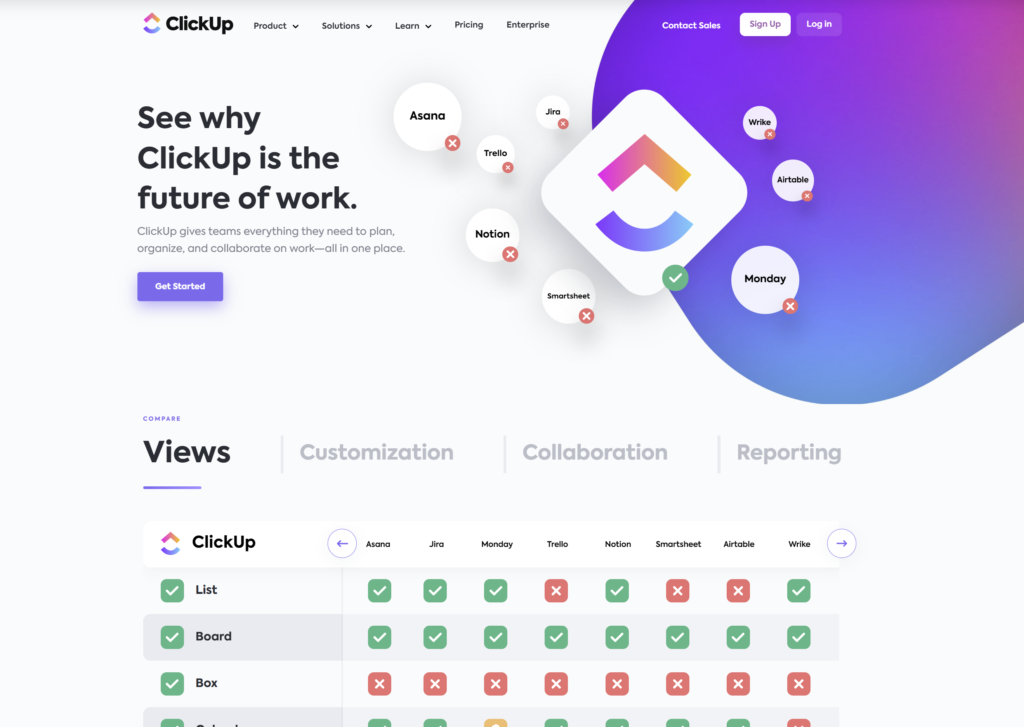
Their core “hub” compare page compares them against their 10 closest competitors, and each individual page ranks well for both the vs. as well as alternative queries:
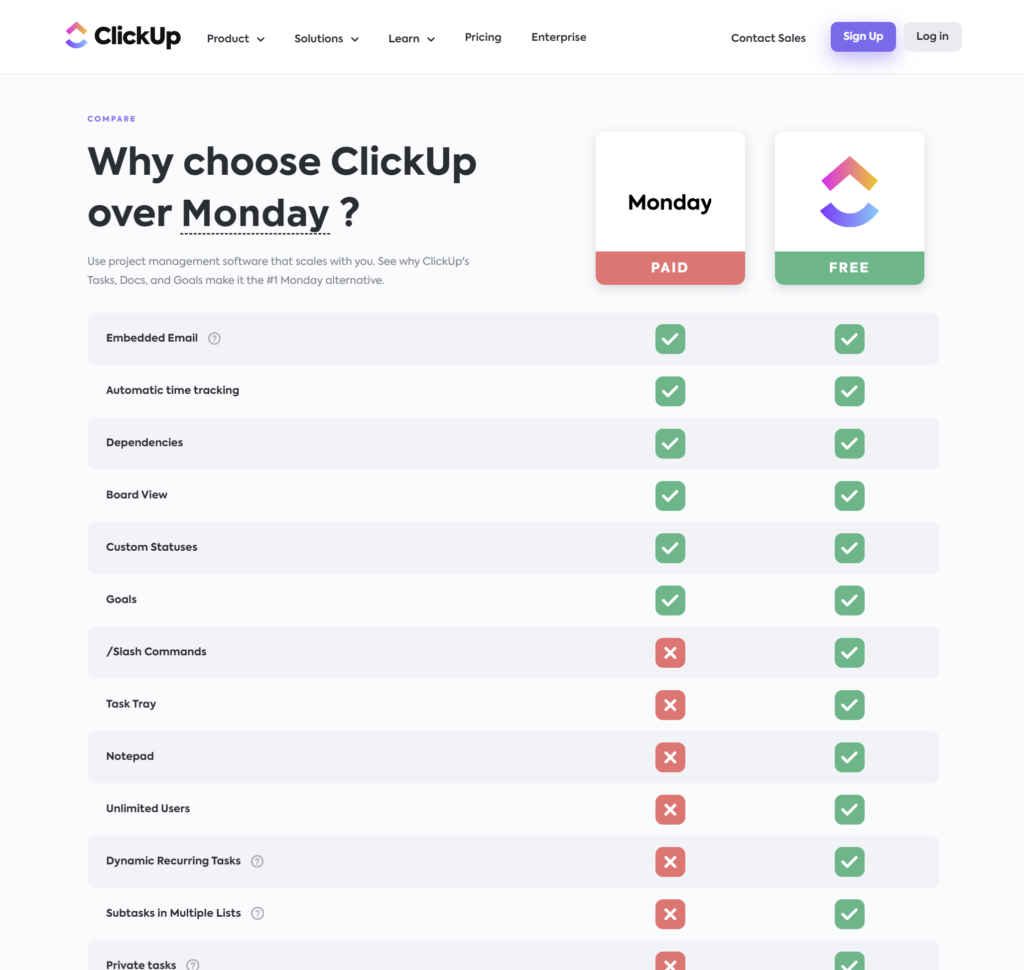
Whether you have brand awareness, or not, you should be creating competitor and alternative comparison pages not allow others to control the narrative around your product.
The creation of use case pages doesn’t map back directly against a keyword related to your product features or benefits, but rather an outcome that the user is looking to achieve.
An example of this could be a B2B SaaS product that helps marketers display testimonials on their landing pages.
You could create a use case page around the query “embed reviews” and how to achieve that use case with your product.
Moving back to the example of Brightlocal, they’ve built out use case pages for their software, including collecting, embedding, and monitoring your online reviews:

Think about the specific actions your users achieve with your SaaS product, and how you can create and map back pages to capture that search volume.
If your product provides integrations into other software, mapping back against search queries where users are searching for a solution for a particular integration can be an excellent way to capture highly-relevant volume at the bottom of the funnel.
Zapier’s setup is an excellent example of this:
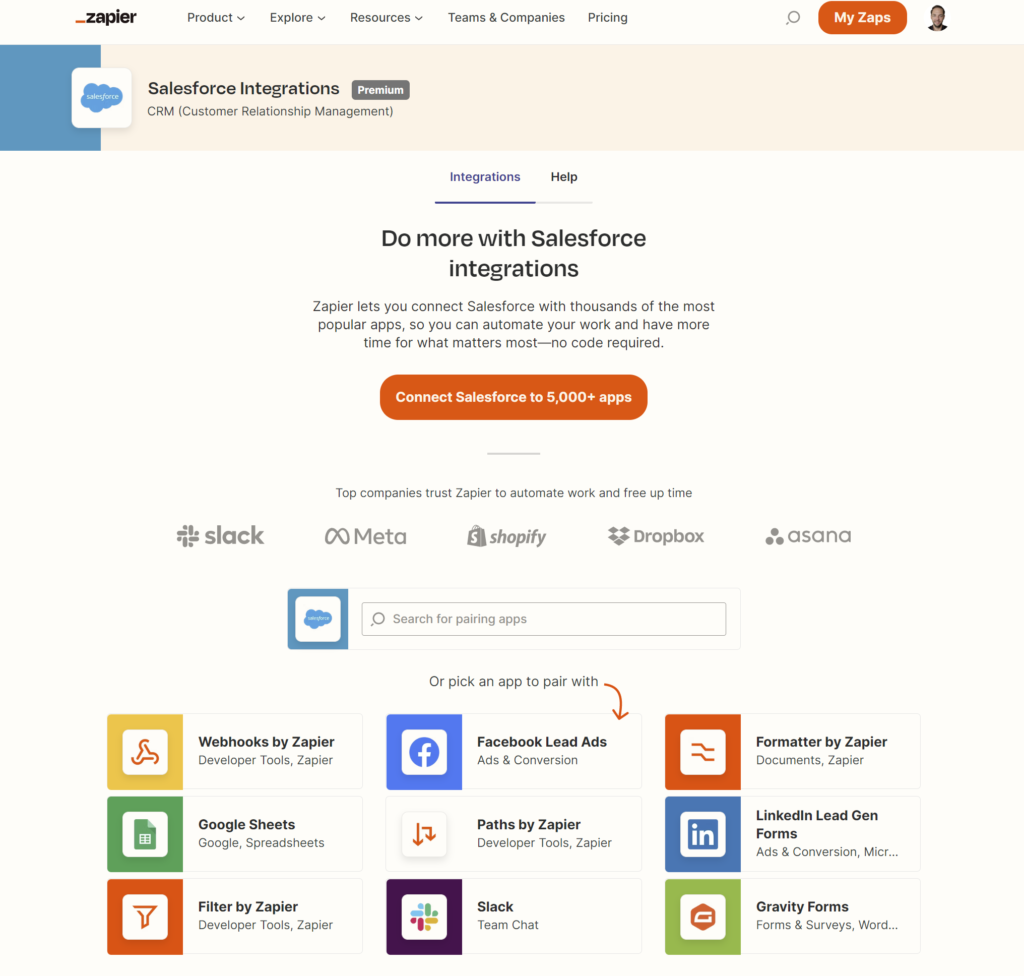
For example, for someone looking for integrations into Salesforce – Zapier pops up and showcases all of it’s 5,000+ apps that can be plugged directly into Salesforce with an easy-to-use searchbar.
Brilliant.
They’ve built an entire integrations “hub”, and have individual integration landing pages for all of the platforms they connect to, allowing this set of pages to achieve huge numbers of organic, bottom-funnel traffic:

The integration pages that Zapier has built account for a whopping 15% of their total organic search traffic.
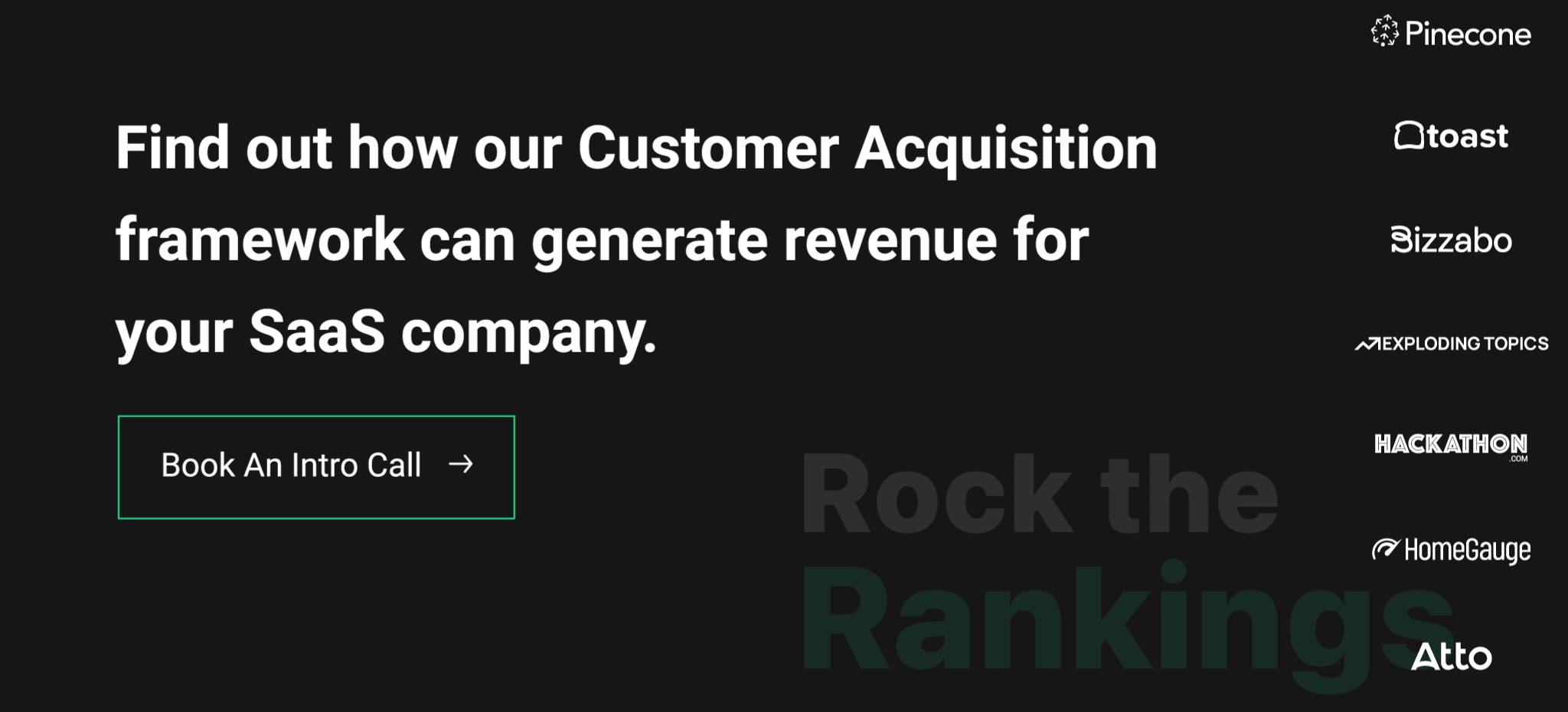
Start by deciding which stage your organization is at, so it’s clear whether you need to start at the top, or work reverse through the marketing funnel.
Work your way through the marketing funnel for the highest-impact items to start.
By implementing the above framework, and focusing on the high-impact content types first, you’ll be able to best prioritize the quick wins and hyper-focus on content that actually generates revenue.
Founder of Rock The Rankings, an SEO partner that helps B2B SaaS brands crush their organic growth goals. An avid fan of tennis, and growing micro-SaaS businesses on the weekend. 2x SaaS Co-Founder – Currently working to build and scale Simple Testimonial.
Book a 1-on-1 intro call with our founder that includes a FREE custom marketing plan. Start growing faster, today.